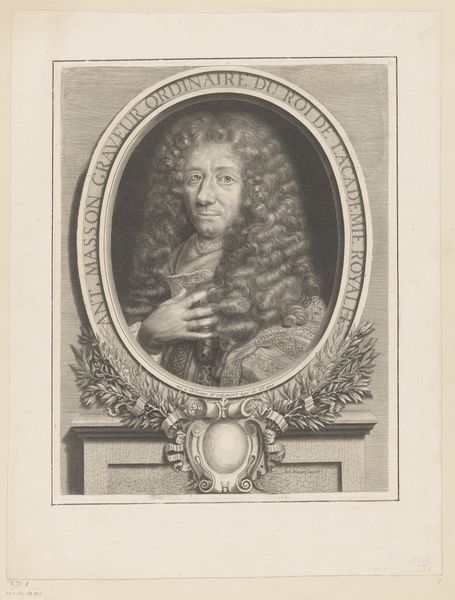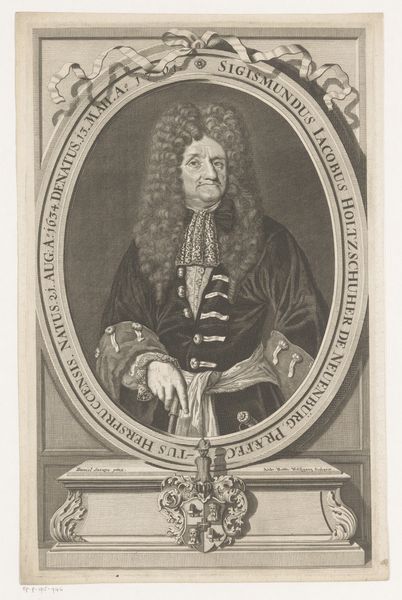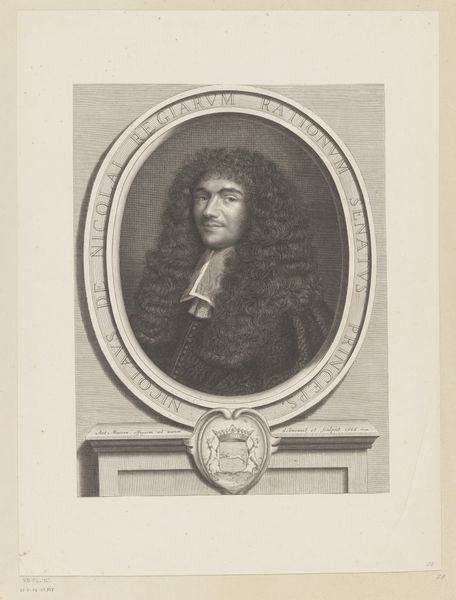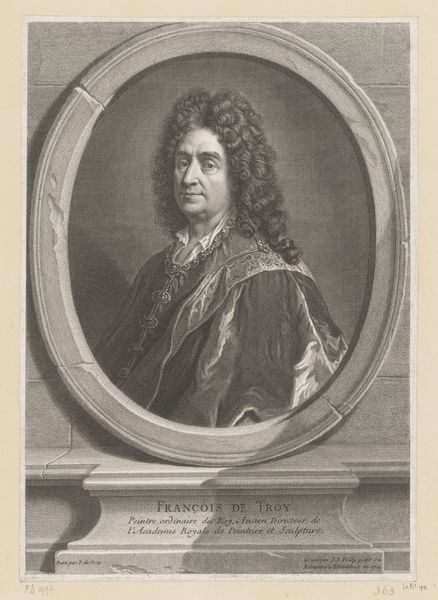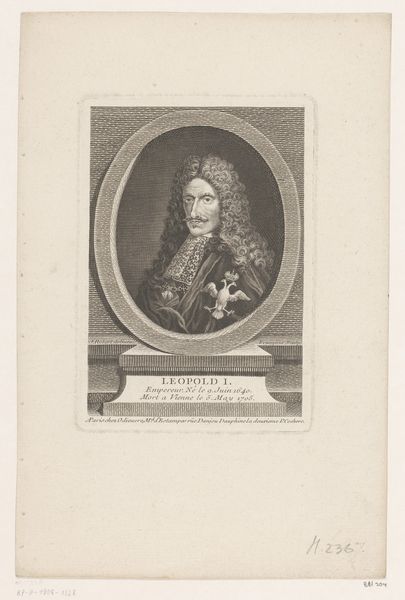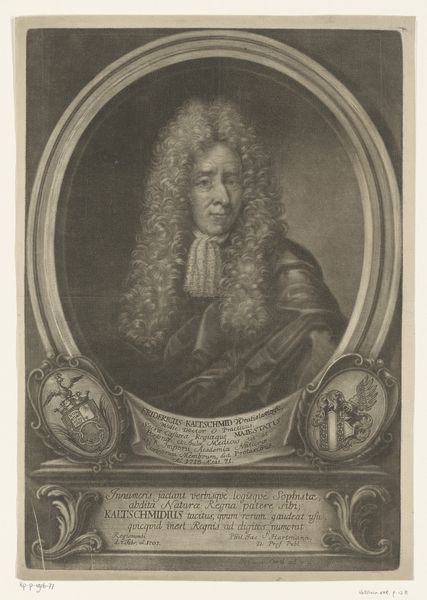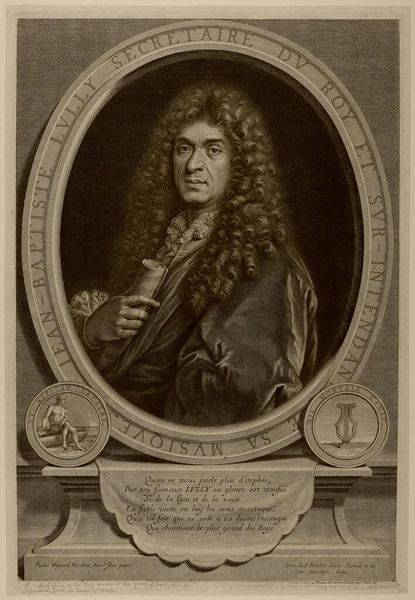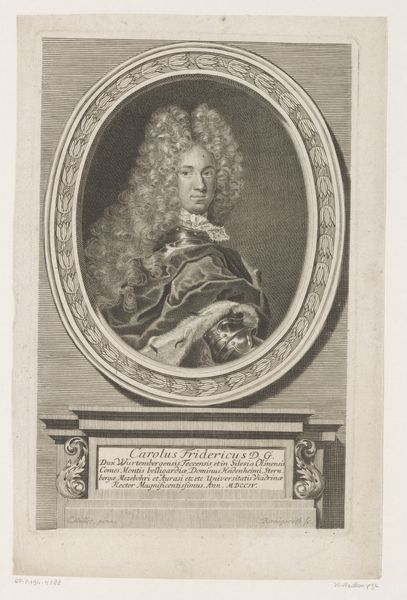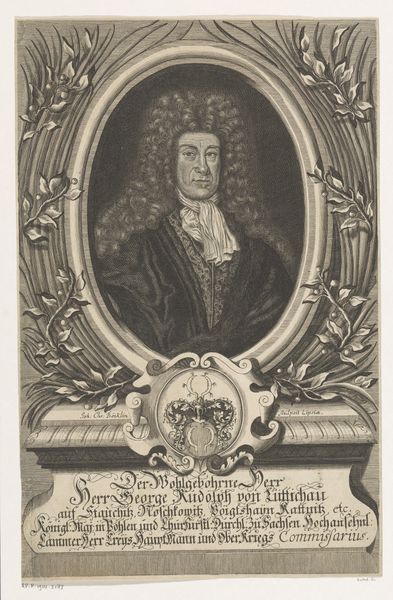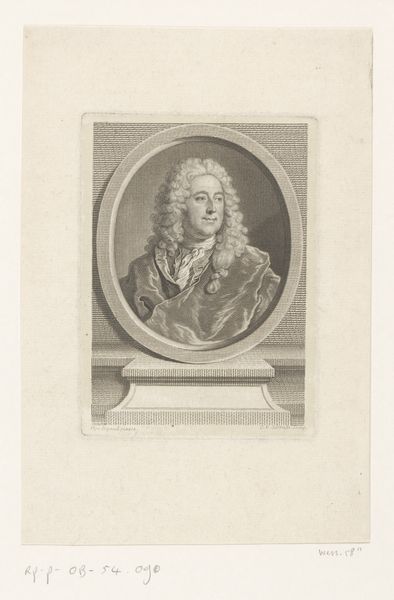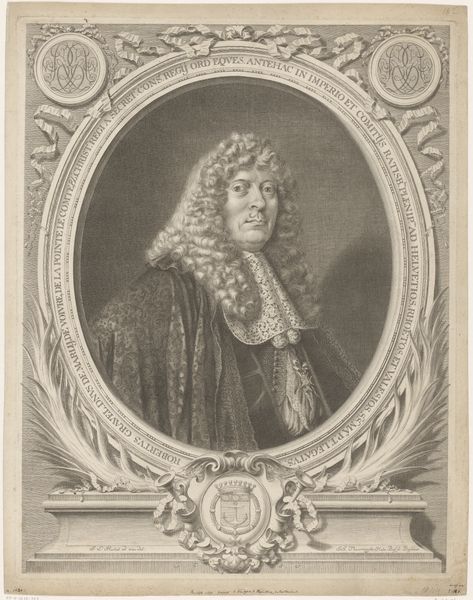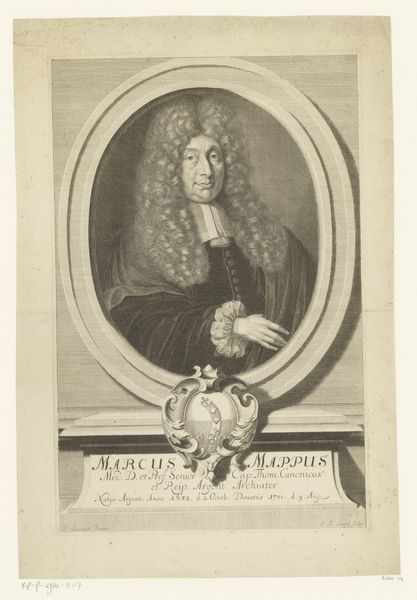
engraving
#
portrait
#
baroque
#
history-painting
#
engraving
Dimensions: height 515 mm, width 352 mm
Copyright: Rijks Museum: Open Domain
Jean Louis Roullet made this engraving of Jean-Baptiste Lully, sometime in the late 17th century. The image is made using a printmaking technique which involves meticulously carving lines into a metal plate, inking it, and then pressing it onto paper. The result is a monochrome image with incredible detail. Look closely at Lully's elaborate wig, or the intricate lettering that surrounds the portrait. These details required immense patience and skill on the part of the engraver, reflecting a significant investment of labor. The choice of printmaking as a medium is itself significant. Unlike painting or sculpture, prints can be reproduced multiple times, making them a powerful tool for disseminating images and ideas. In this case, the portrait of Lully, a prominent composer and courtier, would have been circulated among the elite, reinforcing his status and influence. The print therefore operates within a system of patronage and power, reflecting the social hierarchies of the time. By considering the materials and processes involved in its creation, we can gain a deeper understanding of the print's cultural and social significance.
Comments
No comments
Be the first to comment and join the conversation on the ultimate creative platform.

